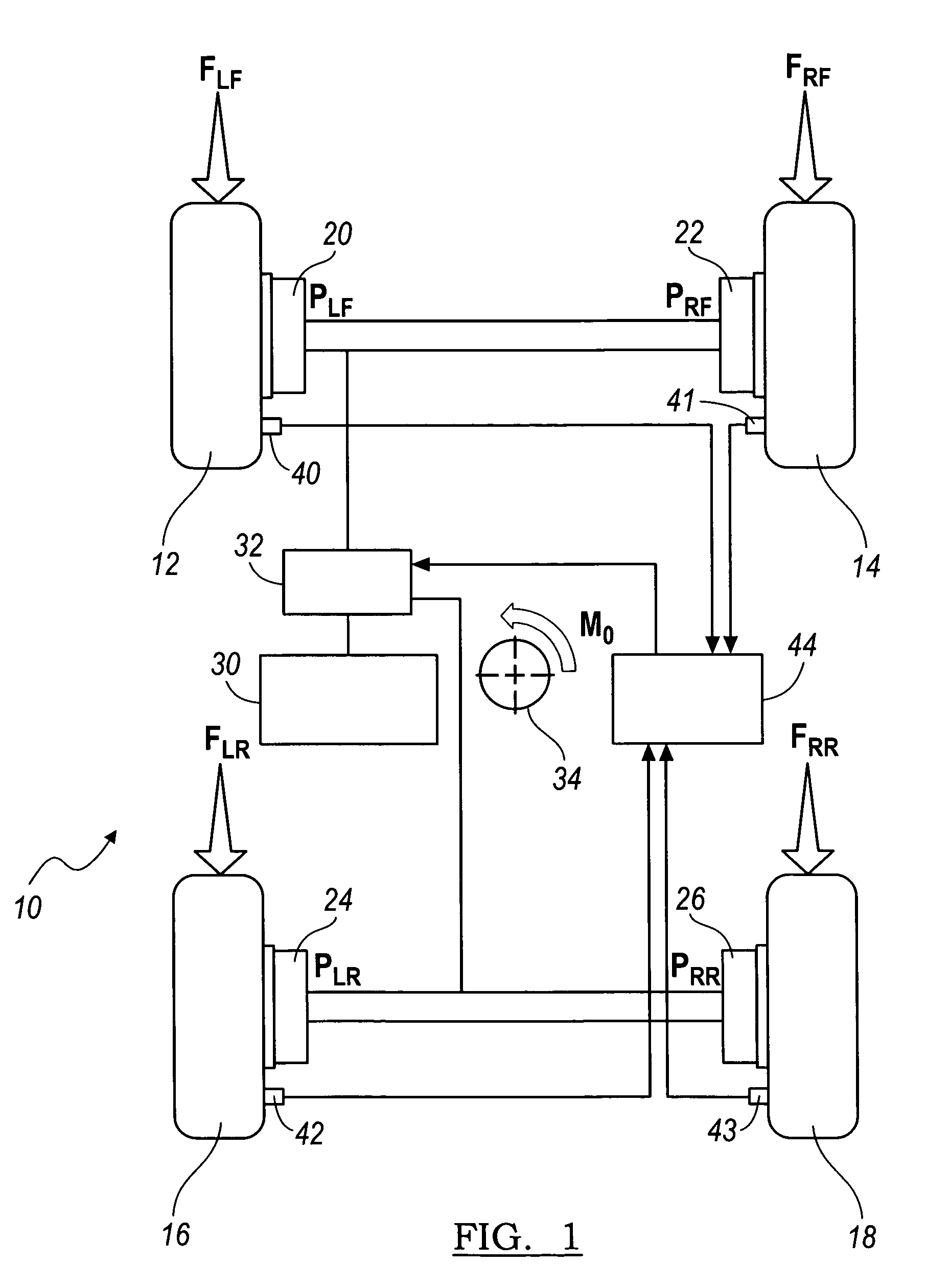Method for providing enhanced stability of a vehicle with a deflated tire
a technology of deflated tires and enhanced stability, which is applied in the direction of vehicle tyre testing, braking systems, braking components, etc., can solve the problems of inadequate lateral force to maintain the desired turning radius, vehicle yaw or spin, and inability to support the same forces of deflated tires, so as to reduce the current magnitude of brake pressure and enhance the stability of the motor vehicle
- Summary
- Abstract
- Description
- Claims
- Application Information
AI Technical Summary
Benefits of technology
Problems solved by technology
Method used
Image
Examples
Embodiment Construction
[0017]Referring now to the drawings, there is illustrated in FIG. 1 a motor vehicle 10 that is supported on front wheels, each fitted with a tire 12, 14 and rear wheels, each fitted with a tire 16, 18. The rotational speed of the front wheels is controlled by front brakes 20, 22; the rotational speed of the rear wheels is controlled by rear brakes 24, 26. A source of brake pressure 30 is hydraulically connected through an anti-lock brake system (ABS) controller or vehicle stability control (VSC) modulator 32 to the front brakes, to which brake pressures PLF and PRF are applied and to the rear brakes, to which brake pressures PLR and PRR are applied. In the following description, the front wheels 12 and 14 are sometimes referred to as the front axle; while the rear wheels 16 and 18 are sometimes referred to as the rear axle.
[0018]Under normal forward driving conditions when the front brakes are applied, the brake pressure source 30 delivers brake pressure that is approximately equal ...
PUM
 Login to View More
Login to View More Abstract
Description
Claims
Application Information
 Login to View More
Login to View More - R&D
- Intellectual Property
- Life Sciences
- Materials
- Tech Scout
- Unparalleled Data Quality
- Higher Quality Content
- 60% Fewer Hallucinations
Browse by: Latest US Patents, China's latest patents, Technical Efficacy Thesaurus, Application Domain, Technology Topic, Popular Technical Reports.
© 2025 PatSnap. All rights reserved.Legal|Privacy policy|Modern Slavery Act Transparency Statement|Sitemap|About US| Contact US: help@patsnap.com



